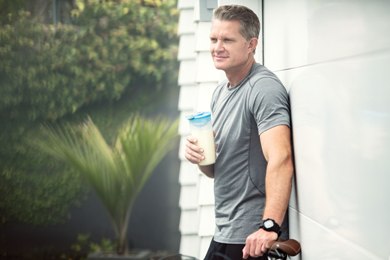Five Trends Shaping Dairy Food and Beverage Manufacturing

NZMP, the global dairy ingredients brand of New Zealand dairy co-operative Fonterra, has released a list of the top five global consumer food and beverage trends that it recommends manufacturers address to stay relevant.
Gillian Munnik, NZMP Marketing Director, says, “NZMP teams in over 130 markets are seeing a renewed focus on foods that suit individual lifestyles, beliefs and desires for new experiences. As a result, there’s plenty of unmet need and exciting potential that manufacturers could capture with the right products and stories.”
“At a macro level, we are continuing to see global shifts that shape the way we live as consumers and the way we do business as companies. Urbanisation, demographic changes, developments in technology – all constantly influence consumer behaviours, including the way food and beverage products are being consumed year on year. NZMP monitors how these behaviours are evolving.”
“Five trends stand out for their ability to shape future growth of the dairy industry,” adds Gillian Munnik.
Naturally functional
69% of consumers associate ‘natural’ with ‘healthy’. (Global Data 2017 Q4 global consumer survey)
“New Nutrition Business calls this the king of all trends because of its broad influence and overlap with most of the other trends,” says Roshena De Leon, NZMP Global Insights Manager.
 “We will continue to see consumers preferring natural options to tap into the nutritional values of food. This comes to life either through consuming foods that are perceived to deliver therapeutic benefits, ‘food as medicine’ or looking for the intrinsic health benefits associated with certain food ingredients,” points out Roshena De Leon.
“We will continue to see consumers preferring natural options to tap into the nutritional values of food. This comes to life either through consuming foods that are perceived to deliver therapeutic benefits, ‘food as medicine’ or looking for the intrinsic health benefits associated with certain food ingredients,” points out Roshena De Leon.
This drive for naturally functional food is one of the factors behind the increasing popularity of high-protein foods. Research indicates that dairy protein stimulates muscle growth in excess of other common protein sources[1] and in countries like China and Japan it’s ranked number one in terms of importance for maintaining health and wellness versus other nutrients.[2]
Personalisation & fragmentation
70% of consumers find products customised to their individual health needs appealing. (Global Data, 2016 Q3 global consumer survey)
 James Dekker, NZMP Programme Manager Nutrition and Health, says, “Increasingly consumers will choose a product based on the promise that it addresses their particular dietary requirements. This will cause further fragmentation of categories and markets, meaning companies will have to find the best way to efficiently and effectively cater to various consumer segments, or identify the ones that provide most value.”
James Dekker, NZMP Programme Manager Nutrition and Health, says, “Increasingly consumers will choose a product based on the promise that it addresses their particular dietary requirements. This will cause further fragmentation of categories and markets, meaning companies will have to find the best way to efficiently and effectively cater to various consumer segments, or identify the ones that provide most value.”
“The next progression of this trend sees consumers making decisions based on their unique genetic profile, metabolism or disease risks.”
“A small, but growing, group of consumers are increasingly open to a more science-based approach to personalisation. These are the consumers wanting to make changes in their diet based on their individual needs, be it through DNA testing, microbiome profiling or other tests.”
Full disclosure
The three things most people globally associate with a clean label are no pesticides, chemicals or toxins at 40%; Natural, organic at 37%; and no GMOs at 31%. (Global Data, 2017 Q1 global consumer survey)
“There is a renewed consumer focus on a democratisation of transparency and traceability,” says Roshena De Leon. “The trend of full disclosure means manufacturers need to extend transparency and traceability to products for all consumers, not just those shopping at the premium end of the market.”
Consumers are shifting towards more natural snacking options, with 37% favouring dairy. (Global Data 2017 Q4 global consumer survey)
“Hyper mobile lifestyles favour food that can be consumed in non-traditional environments and situations. Leading food and beverage manufacturers will be thinking about how their product portfolio can be consumed on the go. Within dairy we anticipate a rise in ambient-stable products, protein-rich snacks and packaging that suits on-the-go snacking,” says Roshena De Leon.
New sensations
60% of consumers say they find trying new experiences most exciting compared to trying new products. (Global Data, 2016 Q3 global consumer survey)
“The way we consume food has evolved significantly especially with the development of technology and social media. While taste remains at the forefront, being ‘instagram-able’ and share-worthy has become a big plus,” says Roshena De Leon.
“This year, Mintel points to texture adding yet another dimension to our search for new sensations and food experiences. The sound, feel and satisfaction texture provides can communicate freshness or add fun and excitement to the consumption of food and beverages,” says Roshena De Leon.
[1] Rutherford et al, 2015
[2] NZMP Consumer Protein Research, 2017


































